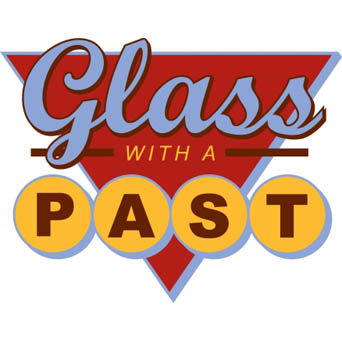Things tend to get creative when you are working with only one color of glass. In my never ending quest to figure out yet another thing I can do with recycled glass, I tried metal inclusions as part of the design.
There are a number of metals that you can include, all of them useful as long as you know what will happen.
Aluminum
Although aluminum is probably not the first metal that you consider for inclusion, it can be surprisingly useful. Aluminum soda cans can be cut into shape and fused between layers of glass. The aluminum will oxidize to black, so plan your design accordingly.
Another type of aluminum that is worth considering is the “gold” leaf found at craft stores. Although it looks gold, when fired, it turns a gray green color. It also fires semi transparently, so it’s a useful tint to keep in mind.
Brass
The trick here is to use solid brass, not brass plated steel. Brass sheet can be easily acquired at the craft store and cut into shapes with shears. The pieces can be fused between layers of window or bottle glass. Brass will maintain it’s gold color unless it is exposed outside of the glass, then a layer of oxidation will form that can be easily brushed off after firing.
Brass plumbers chain can be found at the hardware store and can be used to fuse hanging loops into glass pieces.
Even brass dish scrubbies can be used as inclusions between layers of glass.
Be sure not to overlook solid brass clock gears, they can often be purchased from clock shops for the price of brass scrap.
Copper
Copper is a super easily found metal that works well with glass. Copper roof flashing can be found at the hardware store, as well as copper electrical wire. Craft stores often have a wide variety of copper meshes and sheet in different weights.
Copper will oxidize to a deep red color when sealed into the glass, exposed copper will oxidize heavily and become very soft.
Copper sheet can be cut into elaborate designs or cut into shapes using scrapbooking punches before being fused between layers of window or bottle glass.
NiChrome
NiChrome (Nickel Chromium) wire, also known as Stamen Wire, or element wire is also a good choice for inclusion. NiChrome wire is excellent for included hanging loops on small projects such as pendants. The wire stays a blackish color, so could also be used for outlines or drawing type of inclusions.
Sterling Silver
Sterling silver is an interesting choice for inclusions within the glass project, it oxidizes badly when exposed to fusing temperatures outside of the glass and is a poor choice for fused in hanging loops.
Sterling silver is a reactionary metal, meaning that it reacts to the chemical make up of the glass and does some pretty cool things. Float glass causes a halo reaction that looks yellow when viewed in daylight, with a blue halo when viewed in front of a black background. Older plate glass causes a pink reaction with the silver. The reactions are subtle halo effects when can be very effective when planned for.
Fine Silver
Fine Silver (99.9% pure) is a better choice for fused in loops for pendants. Fine silver maintains it’s integrity better than sterling silver under the temperatures. The high cost of this material will probably limit it to very high end jewelry and art pieces.
Be open minded to trying anything, remember, experimenting is the way we learn! Let me know if you’ve fused some other kind of metal and what the results were.










